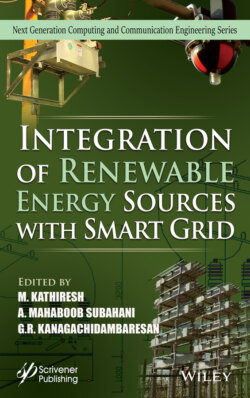Читать книгу Integration of Renewable Energy Sources with Smart Grid - Группа авторов - Страница 17
1.1.3 Fuel Cell
ОглавлениеIn search of a clean energy source in the current energy sector, fuel cell has gained its importance. Fuel cell uses hydrogen as a fuel and the energy companies have started concentrating on low carbon hydrogen production. The industries have started using electrolyzer to produce clean hydrogen. In recent years, the electrolyzer installation has increased considerably. The survey says that 350,000 tonnes of low carbon hydrogen production has taken place by the end of year 2019 and 20 other new projects have been targeted by 2020. Fuel cell plays a vital role in generating electricity by using hydrogen as fuel. The more the hydrogen, the more the power. It is similar to a battery in some aspects but can supply energy for a long period of time and it is due to the continuous supply of fuel and oxygen to produce power. Due to these factors, fuel cell finds its application in satellites, manned spacecraft, and other relevant areas. It is also a type of RES that works on the principle of electrochemical reaction that converts chemical energy into an electrical energy. It converts the chemical energy of a fuel, namely, the hydrogen and an oxidizing agent, the oxygen, into electricity.
Figure 1.8 shows the diagram of a fuel cell. A fuel cell consists of an anode, cathode, and an electrolyte membrane. Hydrogen fuel is passed through the anode of a fuel cell and oxygen through the cathode. The hydrogen is split into electrons and protons at the anode side. The protons will pass through the membrane to the cathode side and the electrons are made to flow through an external circuit connected to the load After passing through the circuit, the electrons combine with the protons along with oxygen in air and produces water and heat as their by-product. Fuel cells are very clean as they use pure hydrogen as fuel. The efficiency of the fuel cell is high when compared to conventional techniques like steam turbine and internal combustion engine. The efficiency of a fuel cell can further be increased by interfacing it with a combined heat power system. The waste heat generated from the fuel cell can be used for various applications.
The types of fuel cell are as follows:
1 Proton exchange membrane (PEM) fuel cell
2 Direct methanol fuel cell (DMFC)
3 Alkaline fuel cell (AFC)
4 Phosphoric acid fuel cell (PAFC)
5 Molten carbonate fuel cell (MCFC)
6 Solid oxide fuel cell (SOFC)
7 Reversible fuel cell
Figure 1.8 Diagram of a fuel cell.
